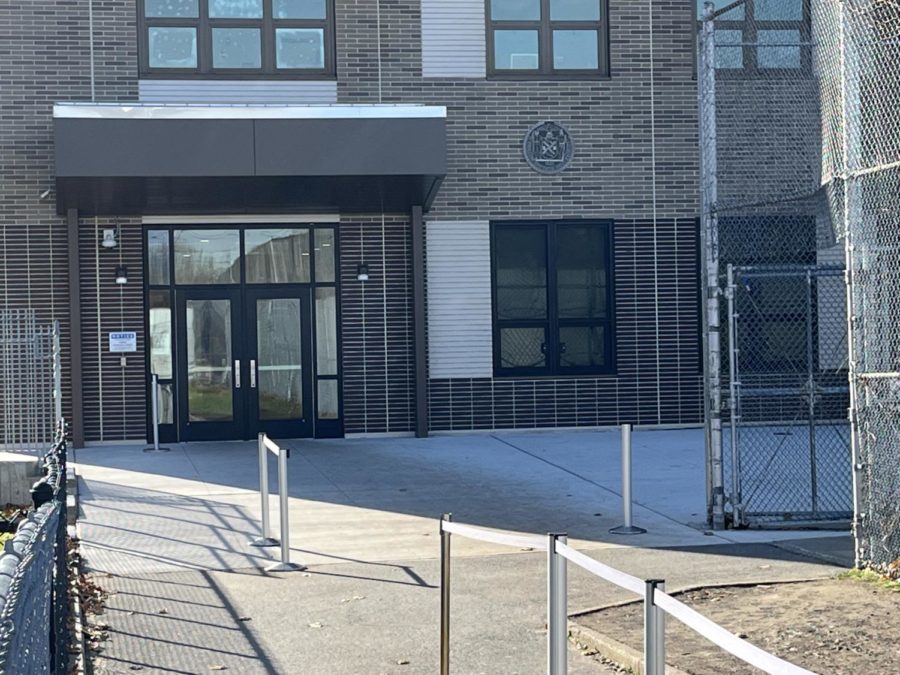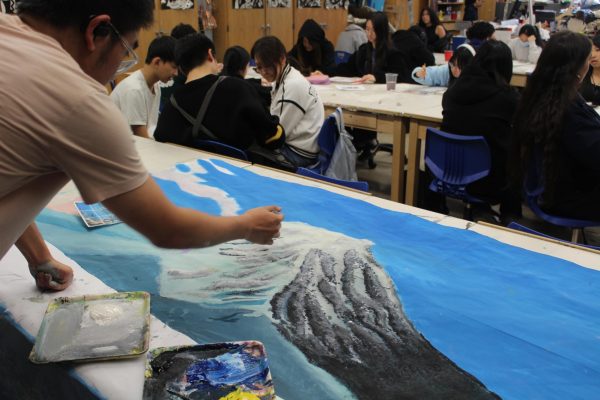Annex: New year, New building and Opportunities
When I got my schedule for the upcoming school year, there was a strange letter “A” in front of a few of the room numbers for my classes. After inquiring with my friends about this foreign concept, I was eventually told that the “A” signifies my classes being in the annex building this year.
The annex building? What is that?
This building was as new to me as it was to many other Francis Lewis students as many questions arose: Which classes would be hosted there? How are the facilities in the annex? And lastly, how would this impact my learning and student experience?
The annex, after going through 6 total years of planning, testing, and construction, opened up to public use in September of 2022. The annex’s facilities included a rooftop hydroponic greenhouse, culinary kitchen, research laboratory, conference room and classrooms, providing 550 seats.
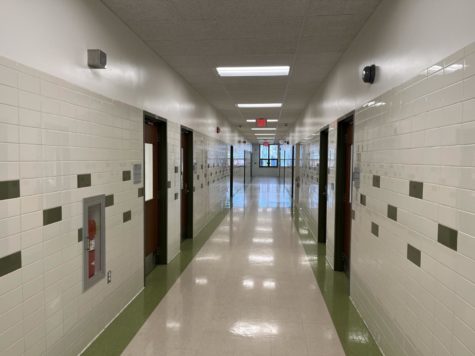
“The only thing I like is having an addition of classes,” junior Constantine Grant said. “We have culinary, astrology, [and] more forensic classes there. “I like the way they have it organized, it’s not complicated to get around. It’s very simple, it’s very hard to mess up.”
The annex was built to reduce over crowdedness at Francis Lewis, and allow students to have an earlier schedule.
“Francis Lewis High School has been the most overcrowded school in New York City for a long time,” Principal Dr. Marmor said. “We were operating somewhere around 210 to 215% of our capacity. It was obviously to the point where we had to start making accommodations in the building.”
“The room you’re sitting in right now, which is my conference room, we turned into a classroom, which is why you still see some of the things on the walls, and there’s a board behind me. It was becoming impossible to give the right classes to everybody and give you full schedules and not have you have to be here until five o’clock or six o’clock.”
With classes being transferred into the annex, the culinary program is able to enjoy its new facilities.
”Yeah, I think they [students] love it too,” Chef Syham said. “I ask all my students how they like the building. This building is brand new. We have air conditioning, we have clean floors, nice big windows, wifi, it’s everything we need.”
The culinary space also includes specific specialized equipment for cooking.
“We have two large walk-ins, we have [a] temperature control pantry room, we have a lot of catering equipment which is larger equipment, such as a tilt skillet, a big soup grazer, and kettle,” Chef Syham said. “We have commercial dough mixers, we have commercial washer [and] dryer, commercial ice machine, really large coffee pots, three grills, and three deep fryers.”
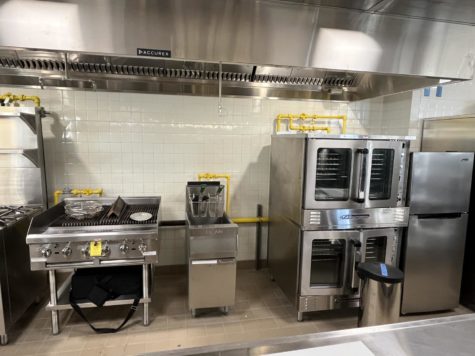
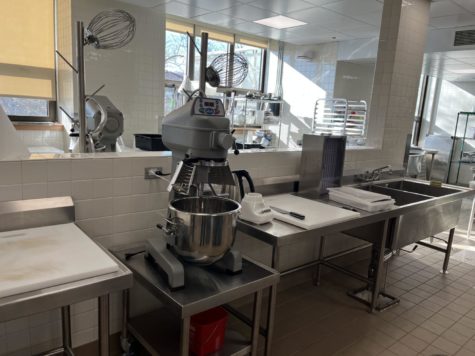
Much of the science department has also been moved to the annex following the construction of this new building. As a result, science teachers have been greatly impacted by this change.
”I like the smartboards they have on the walls,” Mr. Condelles said. “There is also a lot of whiteboard space to be able to write on which I think is really, really good. I think overall I do like the classroom.”
Junior Ada Zeng commented on the interior design and desks in the classrooms, stating “it makes me feel like I’m in kindergarten.”
“First of all, the annex, it’s very colorful, it makes me more focused,” Zeng stated. “In contrast to the main building, sure it’s big, the desks, [but] it’s not very original. It doesn’t make me too focused. I like how in the annex buildings, the classrooms are small, and then it’s in pairs, we’re in groups, those make me interact with my peers more often. I like those better.”
Facilities in the annex, such as the greenhouse, have also opened up many new opportunities for students.
“You have right away a production facility to produce fresh herbs [and] vegetables,” Dr. Marmor said. “That’s all going to go right into the culinary program and get cooked fresh. There’s going to be enough produce: lettuce, tomatoes, cucumbers, all kinds of very fancy vegetables that we’re going to be able to start providing. A lot of those fresh vegetables [go] to the school office of school food. That’s going to become the salads that you guys eat in lunch.”
Arriving to class on time in the Annex has been stressful for students as they commute between the main building and the annex within the 4 minutes of time between each class period.
“If you had to go from the annex to the [main] building it’s pretty short, but most of the time, I have classes starting at the third floor, second floor all the way,” Zeng said. “It’s very inconvenient to go from the main building to the annex and go back and forth. Usually, I have to run and everything.”
In contrast, students also feel refreshed with the addition of an annex building to travel to.
“I feel like it kind of helps because it lets me get a little bit of a walk so I’m able to breath [and get] a little bit of energy before my next class,” Grant said.
Additionally, Chef Syham also finds it to be both beneficial and “hard for the students.”
“I know that some students have to walk from one building to another and it could take more than 4 minutes, but I think it is worth it,” Chef Syham said. “I travel back and forth from this building to the old building.”
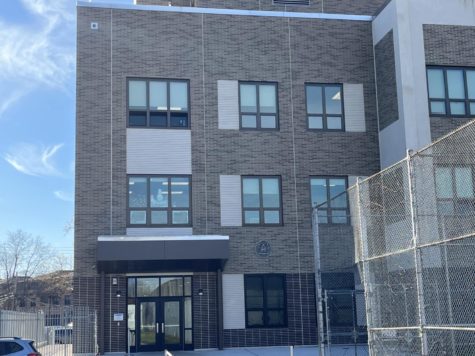
The commute between buildings is also affected by factors such as weather and rain.
“Oh my god, I still remember, we were stuck in the annex and then it was raining so hard we had to run back into the main building,” Zeng recalled. “Even though I had an umbrella I still had drops of rain on my shoulders. Although it’s inconvenient with the weather, the distance to travel is not that far so it’s okay.”
The lack of multiple bathrooms for the several floors on the annex has also raised a few concerns.
“It’s the same as regular school, nothing feels different, everything is pretty much the same,” Grant said. “The only thing about the annex that kinda sucks are the two bathrooms: male and female on the first floor. So if you’re on the third floor, you have to walk all the way down.”
The annex, despite being clean and newly built, could use some improvements according to students.
“I like the colors [in the annex, it makes me feel young. The main building makes me feel like an old person,” Zeng said. “What I would change, although studious, clean, it’s very bland. There’s nothing on the walls. If there’s posters or something encouraging or events on the annex’s walls, I would feel more encouraged or engaged.”
“The main building, there’s posters everywhere,” Zeng added. “I’ll feel like, oh this event is going on, like there’s this play. Even though students can get information from the main building, I would still like to see posters surround the annex to get students more engaged.”



